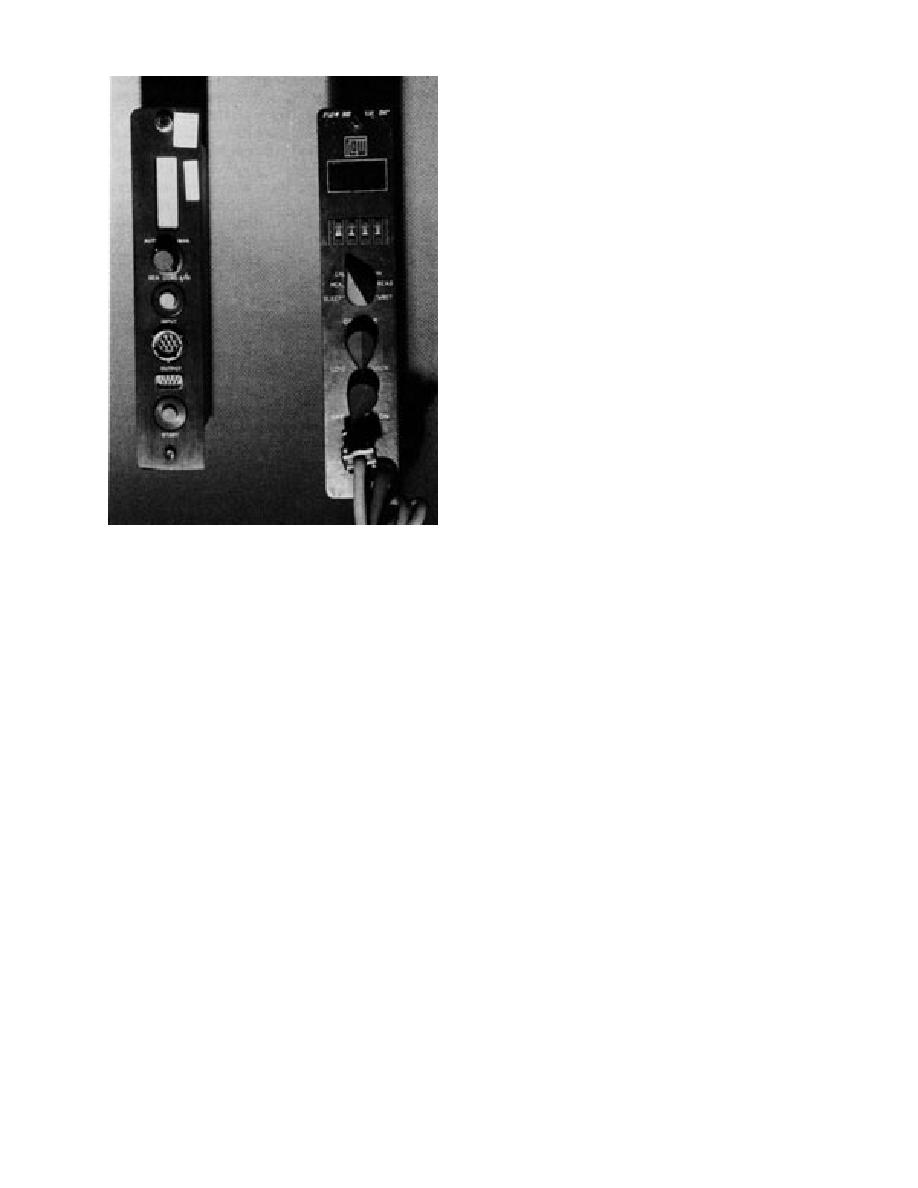
TEST RESULTS
The EMI-31-D, with the two processor units,
was tested on the pack ice north of Alaska (Cross
Island) in April 1992. Problems immediately de-
veloped with use of the Flow Research processor
module. After being removed from the warm he-
licopter, this unit would soon stop operating. Re-
peated efforts to make the unit work at field tem-
peratures of 15 to 25C were of no avail.
When the Flow Research unit was returned to
CRREL, it was disassembled and the electrical
components retested. No faulty components were
found. Nevertheless, when the unit was placed in
a cold box, it would stop functioning when the
temperature in the box was lowered below 10C;
above this temperature the unit worked. After a
long sequence of testing and probing, the mys-
tery was finally solved. It turned out to be a poor
solder joint at a hidden connector. When warm,
the wire at the joint was physically in contact
with the connector, but when the processor was
cooled below 10C, the wire would contract and
no longer be in contact at the solder joint. Unfor-
tunately, as a result of this problem, no field test
data are available from use of this module.
Figure 3. The Geonics (left) and Flow Research ice thick-
The Geonics processor module was shipped
ness modules.
directly from the company to Deadhorse, Alaska.
We had no prior instructions for, or experience
with, the unit. When first used, it, too, did not
The Geonics and Flow Research plug-in mod-
work properly. After lengthy discussion with the
ules are shown in Figure 3. Both units are config-
manufacturer's engineer over the phone, two
ured to fit into the space normally occupied by
problems were identified. A resistor and an in-
the EMI's internal battery pack. Note that the
correct calibration setting needed to be changed.
Flow Research unit has numerous switch settings
Once these changes were made, the Geonics pro-
and a series of small push buttons, most needed
cessor module worked at field temperatures as
to calibrate the unit. The Geonics unit has two
low as 25C.
push buttons and an auto-manual selector switch.
Over 300 EMI soundings were made on both
The latter allows for continuous (auto.) or manual
first-year and multiyear ice. Most of the sound-
(man.) sounding. When on manual, a reading is
ings were made at stations located at 5-m inter-
made by pressing the bottom start button. Press-
vals along a 1-km-long survey line established for
ing the center input button simply changes the
another purpose (Fig. 4). At each station the snow
seawater conductivity value, which is automati-
and ice thicknesses were determined by drill hole
cally shown in the digital displayed during this
measurement. First-year pressure ridges were not
procedure. Both units display ice thickness to 1
sounded because of the electromagnetic field dis-
cm. The ice thickness display range of the Geonics
tortion that occurs in the seawaterice block keel
unit is 0 to 9.99 m, while the Flow Research mod-
structure. This distortion cannot be properly ac-
ule has a larger range. Nevertheless, the practical
counted for. Abrupt changes in ice thickness, such
ice thickness measurement range of the EMI is
as at the transition of thick ice to thin lead ice,
about 5 m.
were also not sounded because of the electromag-
The Geonics plug-in module was designed to
netic field distortion that occurs at such sharp
be operated from either a rechargeable battery
transitions.
belt pack or a portable rechargeable battery. The
EMI conductivity and ice thickness measure-
Flow Research unit was designed to work with
ments were made parallel and perpendicular to
internal disposable lithium batteries.
3



 Previous Page
Previous Page
